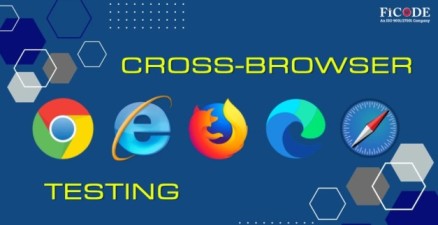Cross-browser compatibility refers to the ability of a web application or website to function correctly across different web browsers and devices. With a multitude of browsers available—such as Chrome, Firefox, Safari, Edge, and others—ensuring that a website looks and behaves consistently for all users is a critical aspect of web development. This article will explore the importance of cross-browser compatibility, common issues, testing strategies, and best practices to achieve it.
Importance of Cross-Browser Compatibility
- User Experience: A website that works seamlessly across various browsers enhances user satisfaction. Users expect to access websites from their preferred browsers without issues, and a consistent experience fosters trust and engagement.
- Market Reach: Different users prefer different browsers based on their personal preferences or operating systems. Ensuring compatibility widens your audience reach and increases potential engagement.
- SEO Benefits: Search engines prioritize websites that offer a good user experience. Websites that are cross-browser compatible tend to rank better in search results, as they are less likely to frustrate users.
- Brand Reputation: A website that functions poorly on certain browsers can damage a brand’s reputation. Consistency across platforms reflects professionalism and attention to detail.
Common Cross-Browser Compatibility Issues
- CSS Differences: Various browsers may interpret CSS styles differently, leading to layout inconsistencies. This can include differences in font rendering, spacing, and positioning.
- JavaScript Behavior: JavaScript may behave differently in various browsers. Features supported by one browser might not be available in another, resulting in errors or unexpected behavior.
- HTML Rendering: Not all browsers interpret HTML elements the same way, which can lead to rendering issues, especially with outdated or non-standard code.
- Responsive Design: Media queries and responsive designs may not function uniformly across all browsers, affecting how a website appears on different devices.
- Plugins and Extensions: Browser-specific plugins or extensions may create compatibility issues, particularly when relying on third-party libraries.
Testing for Cross-Browser Compatibility
- Manual Testing: Check your website manually on various browsers and devices. This approach allows you to observe any discrepancies in design and functionality.
- Automated Testing Tools: Use tools like Selenium, BrowserStack, or Sauce Labs to automate the testing process. These platforms allow you to run tests on multiple browsers and devices simultaneously.
- Cross-Browser Testing Services: Services like LambdaTest and CrossBrowserTesting offer cloud-based platforms for testing how websites perform across different browsers.
- Responsive Design Testing: Tools like Google Chrome DevTools provide a responsive design mode that lets you test your application’s appearance on various screen sizes and resolutions.
- User Feedback: Encourage users to report any issues they encounter on specific browsers, which can help identify compatibility problems that may not be caught during testing.
Best Practices for Achieving Cross-Browser Compatibility
- Use Standard HTML/CSS: Adhering to web standards ensures that browsers interpret your code consistently. Utilize validated HTML and CSS to minimize compatibility issues.
- Graceful Degradation: Design your website to provide a basic experience in older browsers while enhancing functionality in modern ones. This approach ensures that all users can access essential features.
- Progressive Enhancement: Start with a basic, functional version of your website and enhance it for modern browsers. This method ensures that users on older browsers can still access your content.
- Feature Detection: Use libraries like Modernizr to detect browser capabilities and apply conditional loading of scripts or styles based on the features supported by the user’s browser.
- Regular Testing: Make cross-browser testing a regular part of your development process, especially after implementing new features or making changes to your code.
- Keep Up with Browser Updates: Browsers frequently update their engines and capabilities. Staying informed about these changes can help you anticipate and address compatibility issues.
Conclusion
Cross-browser compatibility is an essential aspect of modern web development that directly impacts user experience, brand reputation, and overall success. By understanding common compatibility issues, implementing effective testing strategies, and following best practices, developers can create web applications that work seamlessly across all browsers. Prioritizing cross-browser compatibility ensures that all users, regardless of their browser choice, can enjoy a consistent and functional experience on your website.
